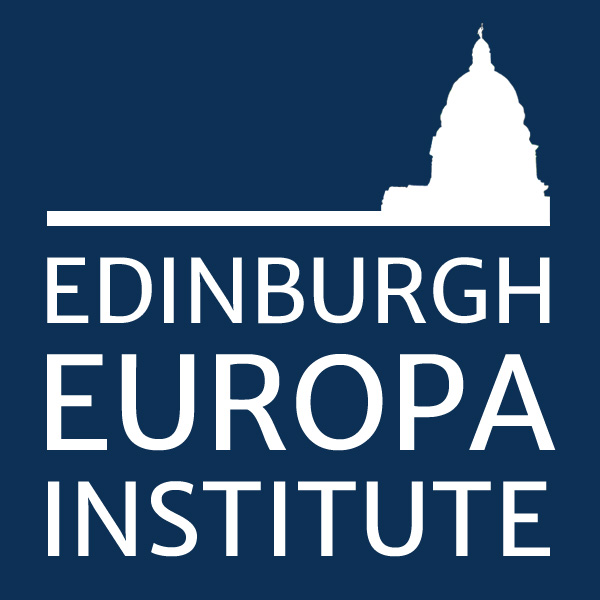Sotiria Grek
Education has been an important, if often unrecognised, means of achieving European integration, writes Sotiria Grek. She argues that the shift of emphasis from a shared high European culture to a standards-based economic mindset reflects the desire of EU leaders to build different kinds of European identity, and that Europe’s current challenges may rekindle a focus on common values.

Plenary Session – Dec 2015, European Parliament, CC-BY-NC-ND-2.0
For a long time in the history of the European education space, education governance was exercised through technologies of the ‘self’, establishing new normative categories and constructing new meanings. These included notions such as ‘common European values’, ‘common culture’ or the idea of ‘Europeanness’.
From the foundation of the European Coal and Steel Community up until the end of the 20th century, education and culture were the pillars of the construction of a European subjectivity. In history and geography, in narratives and tradition, Europe was a classical value. Education and culture, through over-emphasising commonalities and sidelining differences, were handy crutches in lifting the idea of Europeanisation.
The old European myth was indeed a myth of high, elitist European culture, one of Enlightenment ideals meant to be treasured by the European peoples – white middle- or upper-class men, in their majority. Nevertheless, in the 60s, 70s and 80s, these ideals also had a strong social dimension which became particularly appealing and promising after the devastation and despair of the two World Wars.
The Member States of the Union were invited into a project to build a social Europe which would establish itself as the significant ‘Other’ against the inhumanity of an economic system of winners and losers, which was accelerating to global dominance. At the same time, national education systems remained more or less static. Nevertheless, they welcomed exchanges and networks as an additional European ‘extra’, which offered a fresher flavour of cosmopolitanism in their somewhat stale national curricula.
However, it soon turned out that the ‘people’s Europe’ was not sufficient to respond to the demands of the new millennium. In the face of globalisation and the dominance of the knowledge economy, new and urgent technologies of persuasion had to be devised. The voluntary nature of the previous arrangement was too loose to respond to the severe economic challenges of the 21st century.
Constructing, regulating and monitoring, or, in other words, governing the European education space, now had to be based on quantification, measurement and what is now widely known as ‘governing by numbers’. Indicators and benchmarking, together with the dominance of rating and ranking of education performance, became the key technologies of governing the European education space.
According to Anders Fogh Rasmussen, Prime Minister of Denmark at the time, commenting on the Lisbon Strategy (2000), ‘the good thing is that all the symbolic elements are gone, and that which really matters – the core − is left’ (in Jyllands-Posten, 2000 quoted in Shore, 2000).
Interestingly, one of the greatest post-Lisbon developments in the history of the EU has been the weight given to education and training. First, for the EU, rather than an area at the periphery of policymaking, education and learning are – yet again – reinventing Europe. Nonetheless, Europe does not need to pre-exist in the hearts and minds as it was thought before – it is being created, sorted, systematised, scrutinised and constantly improved through the new soft governance tools of comparison and benchmarking.
Hard EU regulation, in areas such as agriculture or trade, for example, often meet the resistance and criticism of Eurosceptics. ‘Soft’ law, on the other hand, is self-imposed and self-adhered. It is effective, manageable and economical, and it looks optional and ‘light-touch’. It seems objective and forward-looking, and it relates to current concerns.
Second, for the Member States, in the field of education, Europe has become the relatively friendlier face of globalisation. It gives them a platform to raise their voice, and it offers them a quality assurance framework, many of which they would otherwise have to devise on their own. It often provides them with best practice advice, leaving the content of the curriculum intact. Above all, it offers them a scapegoat, which they can use to undisputedly justify the necessity for modernisation and reform.
Governing the European education space through indicators and benchmarks is not only to be seen as the project of fulfilling Brussels requirements to achieve specific goals and objectives. Instead, it has to be examined as the deeply penetrating, consciousness-moulding and thus serious business of constructing new categories of (educational) thought and action − the project of re-inventing a ‘new’ European identity of competitive advantage and responsible individualism.
According to Hacking, ‘the bureaucracy of statistics imposes not just by creating administrative rulings but by determining classifications within which people must think of themselves and of the actions that are open to them’ (1991: 194). At their best, these new governance technologies have offered a more coherent and organised framework for the improvement of the quality of education systems across Europe. At their worst, they are transforming education cultures and traditions into tables and graphs, devoid of meaning, political context or any sense of history and place.
International organisations, like the OECD, whose economistic education agenda made it for decades a politically uncomfortable partner, are now becoming central to European education policymaking. The latest cooperation agreement between the European Commission and the OECD in 2013, which publicly declared the intention of both organisations to work closely on most key education policy areas, is the pinnacle of the shift from the ‘peoples’ Europe’ to Europe as a competitive global actor.
The shift of European education governance to ‘governing by numbers’ is not merely a discursive, cosmetic or surface change. It is one of the central components of building new European identities. There seems to be a serious imbalance in the history of the construction of the European education space: from almost obsessively focusing on the ‘big’ history of a very remote past that belonged to few and was of interest to even fewer, Europe has turned to an almost anxiety to forecast, control and shape a one-way future.
However, as always, new challenges and contradictions lay ahead. On the one hand, Euroscepticism and the far-right are on the rise. On the other, the refugee crisis, the Paris massacre and the war against Daesh create a climate where a return to a European common core – whatever that may be – seem to be uniting the European people and their values. Above all, social inequalities across Europe are increasing and so are the voices – especially in the European south – which want to reclaim Europe as a social project.
What is the meaning of these new shifts? Is there a renewed role for education to fabricate a European consciousness? Will we see education and culture shifting towards some of their old agendas? Or has education governance become too technocratic to create new unifying myths? What is the role of European educators in the face of these new realities? There is now need to recognise and to study the role of education in the making of Europe, in order to capture its full impact and role on the future of governance in the EU.

 Sotiria Grek
Sotiria Grek
University of Edinburgh
Dr Sotiria Grek is Senior Lecturer in Social Policy at the University of Edinburgh and Associate Director of the University’s Centre for Science, Knowledge and Policy (SKAPE). Her research interests include education governance, education and European integration and uses of knowledge.
Shortlink: edin.ac/1OCZ8YT | Republication guidance
Please note that this article represents the view of the author(s) alone and not European Futures, the Edinburgh Europa Institute or the University of Edinburgh.
 This article is published under a Creative Commons (Attribution-NonCommercial-NoDerivatives 4.0 International) License.
This article is published under a Creative Commons (Attribution-NonCommercial-NoDerivatives 4.0 International) License.
